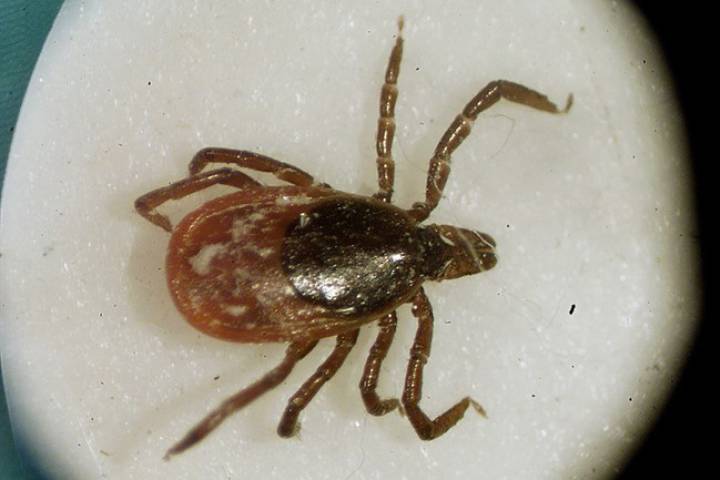The Simcoe Muskoka District Health Unit (SMDHU) is warning residents after blacklegged ticks were located in Simcoe County.

According to a media release issued by the health unit on Thursday, blacklegged ticks were located along the Amos Tract in Oro-Medonte.
The SMDHU says the ticks were found in Oro-Medonte in both the spring and fall of this year. Officials say repeated occurrences of the species indicates they may be establishing in the area. As a result, the potential risk of the ticks carrying harmful bacteria may also be increasing.
The health unit says in Ontario, only blacklegged ticks can carry and transmit borrelia burgdorferi, the bacteria responsible for causing Lyme disease.
“We anticipate that the habitat for blacklegged ticks will spread over time due to our climate becoming more suitable to support the establishment of ticks in our area,” medical officer of health for the SMDHU, Dr. Gardner, said in the release. “Finding ticks in this area serves as a reminder that blacklegged ticks are present in Simcoe Muskoka and that people should take precautions to protect themselves against being bitten by ticks.”
While the health unit says not all ticks are infected with the bacteria and not all tick bites will cause Lyme disease, officials determine “risk areas” within a 20-kilometre radius of the location where a blacklegged tick is found.
In the fall of 2017, Awenda Provincial Park in Tiny Township and the surrounding communities were identified as an estimated risk area.
- Canadian man dies during Texas Ironman event. His widow wants answers as to why
- ‘Shock and disbelief’ after Manitoba school trustee’s Indigenous comments
- Several baby products have been recalled by Health Canada. Here’s the list
- ‘Sciatica was gone’: hospital performs robot-assisted spinal surgery in Canadian first
According to the health unit, this year, Oro-Medonte, Orillia, Barrie, Tiny Township, Tay Township and Severn Township will be included within the estimated risk area.
“Although it is not known if the ticks found in estimated risk areas carry Lyme disease, it is important for people spending time in wooded or grassy areas to be aware of this and take appropriate precautions,” the release reads.
And according to Dr. Gardner, ticks are still active as the weather gets cooler into late fall and early winter when temperatures rise above freezing.
The SMDHU says residents who are going to be spending time in wooded or grassy areas should protect themselves against tick bites by wearing light-coloured pants, long-sleeved shirts and closed footwear, and should tuck their pants into their socks.
The health unit also advises using an insect repellent containing DEET or icaridin.

WATCH: Symptoms and treatment of Lyme disease and West Nile virus
Health officials say if a tick is infected, it needs to be attached to you for a least 24 hours to cause Lyme disease.
After leaving wooded or grassy areas, the health unit says you should search your body for ticks, especially the groin, scalp, back and underarm areas and quickly remove any attached ticks.
Health officials say you should shower within two hours of being in the wooded or grassy area.
Officials say you should also check your pets for ticks after they have been outdoors, as they can carry ticks into your home.
More information about blacklegged ticks and Lyme disease can be found on the health unit’s website.




Comments